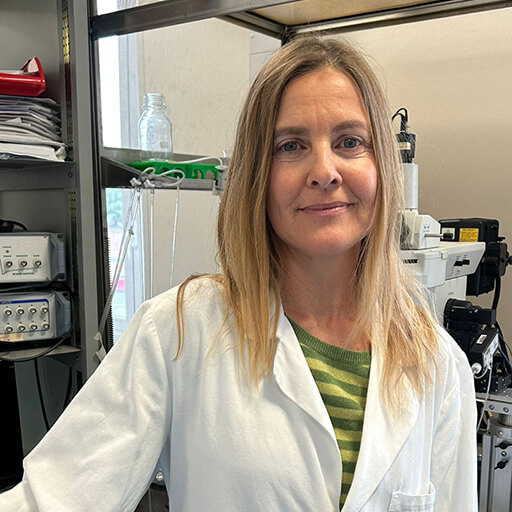Investigating Autophagy in Nitric Oxide Production to Control Eye Pressure

About the Research Project
Program
Award Type
Standard
Award Amount
$200,000
Active Dates
July 01, 2022 - June 30, 2025
Grant ID
G2022010S
Goals
The goal of this project is to investigate how to regulate endogenous nitric oxide (NO) production in Schlemm’s canal to improve the current NO-based glaucoma therapies.
Summary
Nitric oxide (NO), a vasodilator, is tightly regulated by endothelial NO synthase (eNOS) in Schlemm’s canal (SC), a unique vascular structure, to control intraocular pressure (IOP). To identify the molecular mechanisms by which SC regulate the NO production, we will identify a signaling sensor and pathway responsible for eNOS-mediated NO production and the role of autophagy in that process, by using human SC cells in specific aim (SA)1 and, evaluate the physiological relevance of the results in IOP homeostasis by using mouse models in SA2.
Unique and Innovative
This proposal is highly unique and innovative from a conceptual and methodological point of views. This will be the first study to 1) identify the mechanosensor and the molecular mechanism underlying NO production in the conventional outflow pathway, 2) identify upstream target molecules that regulate endogenous NO production, which can advance the current NO-based glaucoma drugs, 3) use of real time-live cell imaging technique to understand NO production in SC cells and 4) use of SC-specific knockout mice to evaluate physiological consequences of NO production in IOP homeostasis.
Foreseeable Benefits
In the short term, the identification of upstream target molecules that can regulate endogenous NO will improve strategies already available for NO-based drugs. In the long term, complete understanding of the regulatory mechanisms underlying IOP homeostasis enable to develop novel drugs for treating ocular hypertension and glaucoma more efficiently and safely. This study will provide scientific basis about the autophagy regulation of NO production in SC cells, and especially, invaluable technical tools, such as “real time imaging system” and “SC-specific knockout mice” in our research field.
Grants
Related Grants
National Glaucoma Research
Saving Sight: A Journey to Healing Without Scars
Active Dates
July 01, 2024 - June 30, 2026

Principal Investigator
Jennifer Fan Gaskin, MBChB, MD, FRANZCO
National Glaucoma Research
Retinal Ganglion Cell Axon Degeneration in a 3D Microfluidic Hydrogel Model
Active Dates
July 01, 2024 - June 30, 2026

Principal Investigator
Shruti Patil, PhD
National Glaucoma Research
An Optimal Form of Nerve Growth Factor as a New Neuroprotective Drug for Glaucoma
Active Dates
July 01, 2023 - June 30, 2025

Principal Investigator
Silvia Marinelli, PhD



